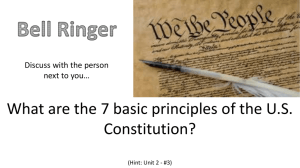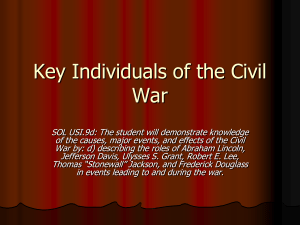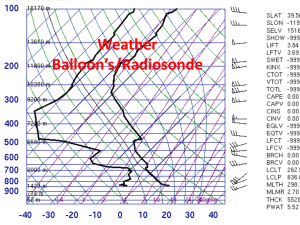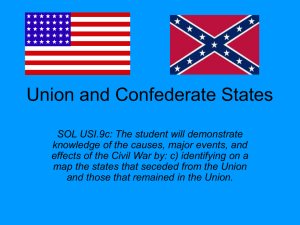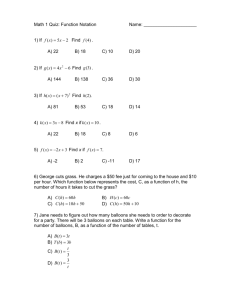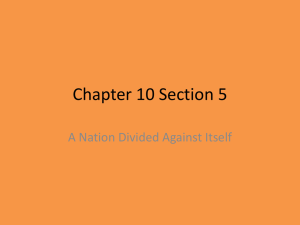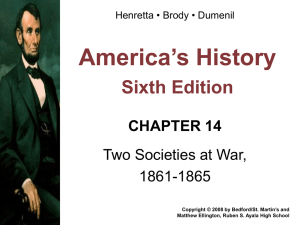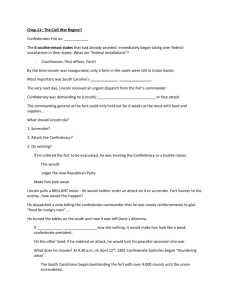The First "Modern War" NOTESHEET
advertisement
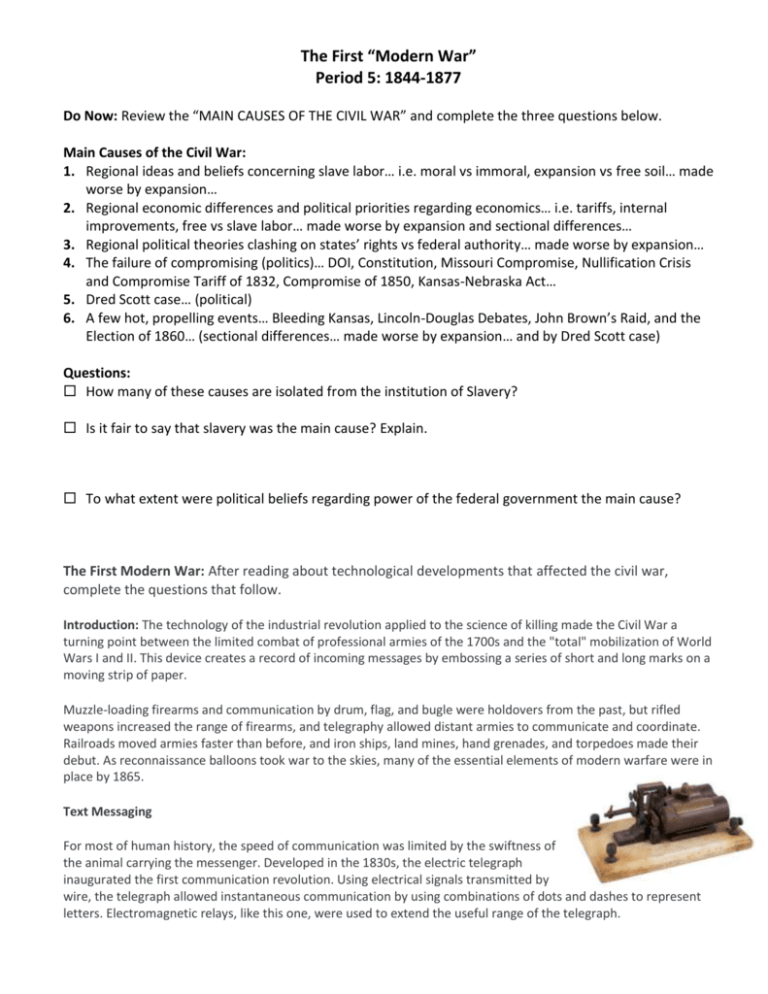
The First “Modern War” Period 5: 1844-1877 Do Now: Review the “MAIN CAUSES OF THE CIVIL WAR” and complete the three questions below. Main Causes of the Civil War: 1. Regional ideas and beliefs concerning slave labor… i.e. moral vs immoral, expansion vs free soil… made worse by expansion… 2. Regional economic differences and political priorities regarding economics… i.e. tariffs, internal improvements, free vs slave labor… made worse by expansion and sectional differences… 3. Regional political theories clashing on states’ rights vs federal authority… made worse by expansion… 4. The failure of compromising (politics)… DOI, Constitution, Missouri Compromise, Nullification Crisis and Compromise Tariff of 1832, Compromise of 1850, Kansas-Nebraska Act… 5. Dred Scott case… (political) 6. A few hot, propelling events… Bleeding Kansas, Lincoln-Douglas Debates, John Brown’s Raid, and the Election of 1860… (sectional differences… made worse by expansion… and by Dred Scott case) Questions: How many of these causes are isolated from the institution of Slavery? Is it fair to say that slavery was the main cause? Explain. To what extent were political beliefs regarding power of the federal government the main cause? The First Modern War: After reading about technological developments that affected the civil war, complete the questions that follow. Introduction: The technology of the industrial revolution applied to the science of killing made the Civil War a turning point between the limited combat of professional armies of the 1700s and the "total" mobilization of World Wars I and II. This device creates a record of incoming messages by embossing a series of short and long marks on a moving strip of paper. Muzzle-loading firearms and communication by drum, flag, and bugle were holdovers from the past, but rifled weapons increased the range of firearms, and telegraphy allowed distant armies to communicate and coordinate. Railroads moved armies faster than before, and iron ships, land mines, hand grenades, and torpedoes made their debut. As reconnaissance balloons took war to the skies, many of the essential elements of modern warfare were in place by 1865. Text Messaging For most of human history, the speed of communication was limited by the swiftness of the animal carrying the messenger. Developed in the 1830s, the electric telegraph inaugurated the first communication revolution. Using electrical signals transmitted by wire, the telegraph allowed instantaneous communication by using combinations of dots and dashes to represent letters. Electromagnetic relays, like this one, were used to extend the useful range of the telegraph. Not only did this allow distant military commanders to communicate and coordinate more effectively, but newspaper reporters could send news to the home front instantaneously as well. With this expanding media coverage, the military took on the added responsibility of managing information as well as their armies. Military Balloons Although European armies experimented with aerial balloons as early as 1783, it was not until the Civil War that they were used in America. Their presence forced enemy commanders continually to conceal the placement and movement of their armies. Following a demonstration for President Lincoln in July 1861, Professor Thaddeus Lowe was granted permission to construct and operate balloons for the Union army. The earliest flights occurred near Washington, D.C., where, for the first time in military history, airborne observers accurately directed artillery fire. The Union balloon corps was plagued by financial and personnel problems and disbanded in August 1863. The Confederates developed a balloon corps that made its Virginia debut at Yorktown in April 1862 but soon disbanded when its only balloon was captured. On April 9, 1862, Pvt. Robert Knox Sneden of the 40th New York Infantry wrote that "[Professor Lowe's] balloon went up for the first time this forenoon. . . . They could see, of course, the inside of the enemy's works, sketch the outlines of parapets, and count the guns already mounted, and note their bearings. From this, the draughtsman can make the maps and plans which they are waiting for." Revolution at Sea On March 8, 1862, the world's first ironclad ship, CSS Virginia, destroyed two woodenhulled U.S. warships at Hampton Roads. A Virginia-born sailor on the USS Cumberland observed, "None of our shots did appear to have an effect on her." This battle revolutionized naval warfare by proving that wooden vessels were obsolete against ironclads. The next day the Union’s first ironclad—the USS Monitor—arrived and fought the Virginia to a draw, ensuring the safety of the Union blockade fleet. A Union sailor from Staunton remarked that "John Bull [Great Britain] will have to build a new navy." Within weeks, Great Britain—the world’s leading naval power—canceled construction of wooden ships. Constructed on the salvaged hull of the captured USS Merrimack, the first Confederate ironclad was rechristened the CSS Virginia. Artist Xanthus Smith and the northern press, however, rejected that name in favor of the alliteration of Monitor and Merrimack. War Rides the Rails For thousands of years, every army that went into battle did so by the power of men and animals carrying it across the countryside. By 1860, however, 30,626 miles of railroad track spread across the United States—1,771 of these in Virginia. Locomotives traveled five times as fast as mule-drawn wagons, transported soldiers close to the scene of battle without tiring them, and allowed armies to operate farther from their bases of supply. The strategic importance of railroads tended to channel offensive operations along the routes of railroad lines. Railroad centers—such as Grafton, Manassas, Petersburg, Charlottesville, Lynchburg, and Wytheville—became important military objectives. Throughout the war, Confederate forces in Virginia slowed Union troop movements by destroying wooden bridges that spanned Virginia’s countless rivers and streams. The artist, Alfred Wordsworth Thompson, noted: “The destruction of Locomotives on the Baltimore & Ohio R. Road has been terrible; no less than 50 of the finest kind having been burnt or broken up, at Martinsburg & other points on the Road." Photography Photography was only two decades old when the Civil War began. Taking a photograph was a slow process and battlefields were too chaotic and dangerous for photographers. Wartime photographs, therefore, consisted of individual and group portraits, camp scenes, and the grisly aftermath of battle. On the Union side, most photographs were made by entrepreneurs. The only photographer hired by the military who left a substantial body of work was Capt. Andrew J. Russell. Russell served as a photographer for the U.S. Military Railroad and the Quartermaster Corps. His images capture the technology, infrastructure, and transportation systems used to move and supply Union armies. The album of 132 photographs above is one of only several bound volumes compiled by Russell that survive in their original form. Reading Questions: Explain why the American Civil War is often called the first modern war. What would be the equivalent of the military balloons in today’s modern war devices? Inaugural Address: Lincoln vowed to ________________________________________________________ “hold, occupy, and possess” all Federal property in the South “physically speaking, ____________________________________________________” Careful not to offend border slave states with “hawkish” rhetoric Republicans and Democratic Unionists supported the speech Lower South saw it as a war message Fort Sumter: Located at the mouth of Charleston Harbor One of the last remaining Federal forts in the South The fort commander notified Lincoln the fort would soon be out of supplies & without them, he would have to surrender to the surrounding confederate forces Lincoln was in a no-win situation Not sending supplies would ruin credibility to uphold the Union Sending supplies would be perceived as an act of war by Confederacy North did not have any more soldiers to send on such short notice Lincoln notified South Carolina he was sending only supplies & no additional soldiers to the fort If war broke out, Lincoln wanted the South to fire first April 9, 1861, a ship carrying supplies left New York April 12, 1861: 70 confederate cannons began bombardment of Fort Sumter Federal troops held for 34 hours before they were forced to surrender Troops allowed to return North No loss of life on either side in the first official skirmish of the Civil War Wrap Up: Analyze the two charts, then determine & explain how the different economies of the North & South affected the war effort. If one side has stronger resources, does that mean they will always win? Explain.
